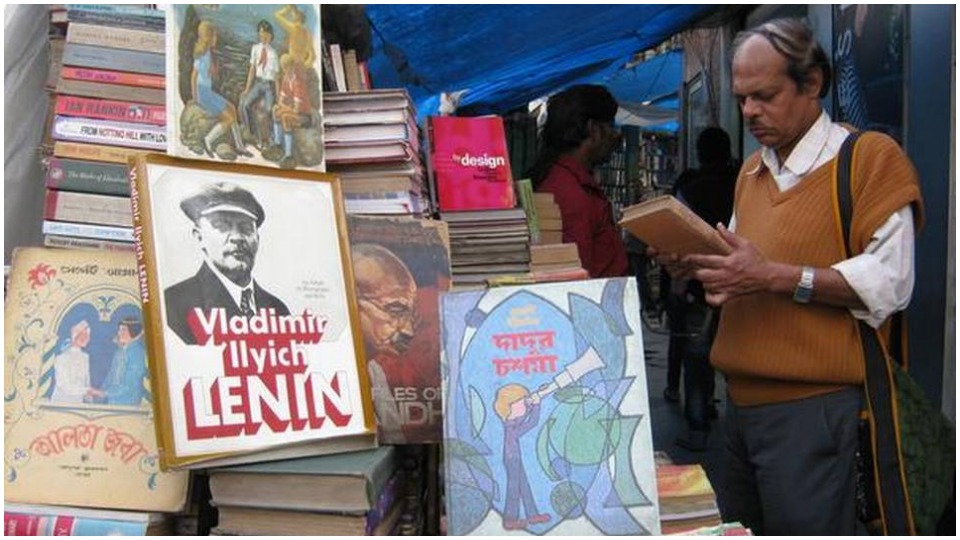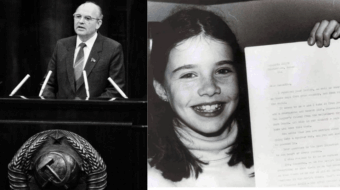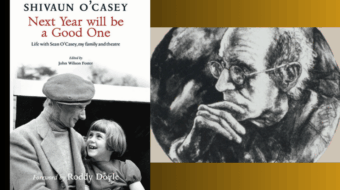
After the triumph of the Bolshevik Revolution, John Reed, famed author of Ten Days that Shook the World, wrote, “The thirst for education, so long thwarted, burst with the Revolution into a frenzy of expression. From Smolny Institute alone, the first six months, went out everyday tons, car-loads, train-loads of literature, saturating the land. Russia absorbed reading matter like hot sand drinks water, insatiable.”
According to Vijay Prashad in his introduction to the collection of short essays that constitute The East Was Read: Socialist Culture in The Third World, “The literacy campaign was not conducted in Russian alone, but in the languages of the many nationalities of the USSR.” Thirty years later, despite the ravages of two world wars, it was announced “that all [Soviet] citizens could read and write. This was a considerable feat.”
The East Was Read isn’t just about literacy or the production, distribution, and consumption of books in the Soviet Union, though. Its goal is considerably more ambitious, despite being only 153 pages.
The goal of The East Was Read is two-fold: to “[pay] homage to the lost world of…Soviet books,” their impact across the globe, and to highlight socialist culture in the Third World.
As Prashad notes, “Generations in the Global South grew up with Soviet books on our shelves. If we could afford books, they would be lavishly illustrated Soviet children’s books, then a volume or two of Tolstoy, and then, finally, perhaps a few volumes of Lenin’s writings…. It is these books, from novels to primers in mathematics, that flooded the continents of Africa, Asia, and Latin America, providing precious knowledge to places that did not have the capacity to publish such a range of what became ‘world literature.’”
The Indian author, Pankaj Mishra, recalled the impact the magazine Soviet Life had on him as a young boy. “When a new issue slipped through the mail slot, I would smell its glossy pages and run my fingers across them…. I lingered longest over the pages with pictures of Young Pioneers,” the communist children’s organization, perhaps envisioning adventure and comradery with other youth across the world.
For millions of young readers in the Third World, Soviet and Eastern European literature was an inexpensive window into a world largely beyond reach.
But it wasn’t just Soviet-produced books, magazines, journals, and newspapers that Mishra recalls. “The Soviet Union had [also] helped set up and then subsidize publishing houses and bookshops across much of what was then known as the developing world,” a contribution to literacy, education, and revolution largely lost with the demise of socialism in Eastern Europe.
Another essay, by Rossen Djagalov, an Assistant Professor of Russian at New York University, briefly touches on the history of Progress Publishers, based in Moscow. According to Djagalov, “In the history of publishing, there has probably never been a press so linguistically ambitious” as Progress.
By 1991, Progress Publishers “was a behemoth publishing yearly close to 2,000 new titles with a print run approaching 30 million copies,” in every language imaginable. “Many around the world fondly remember Progress’s cheap, high quality editions of otherwise unavailable Marxist literature,” Djagalov concluded.
In The East Was Read, you will not only learn about Soviet domestic literacy campaigns and Progress Publishers; you’ll also read about the Foreign Language Publishing House, the first Soviet press to publish works for the non-Soviet world. But most importantly, you will get a sense of what the “cheap, high quality” books and magazines meant to the millions of people across the globe who were inspired by them.

Another contributor to the collection added, “in a time when ‘foreign’ was really distant and thus especially exotic, these books brought the tundra home, eliminating several emotional, political, social, and physical geographies.”
The East Was Read, though, isn’t just about books; it is about culture geared towards liberation. Another chapter discusses the early 1968 Cultural Congress of Havana, “a colossal event, considered of pivotal importance not only for Cuba, but for the Third World project as a whole.” There are also chapters on Socialist Cinema and poetry.
As a short book, The East Was Read is a huge accomplishment. The individual chapters consumed as a whole succeed to painting a unique picture—of nostalgia, yes, but also of the possibilities inherent in the human capacity to grow, evolve, and build solidarity across continents and generations, all towards the goal of constructing a literate, educated, socialist community of nations, a project that has unfortunately largely been forgotten with the collapse of the Soviet Union and the Eastern European states.
The East Was Read reminds us of the possibilities of another time and place and thereby provides hope for the future as well. It is highly recommended.
The East Was Read: Socialist Culture in The Third World
Edited by Vijay Prashad
LeftWord Books, 2019, 153 pages










